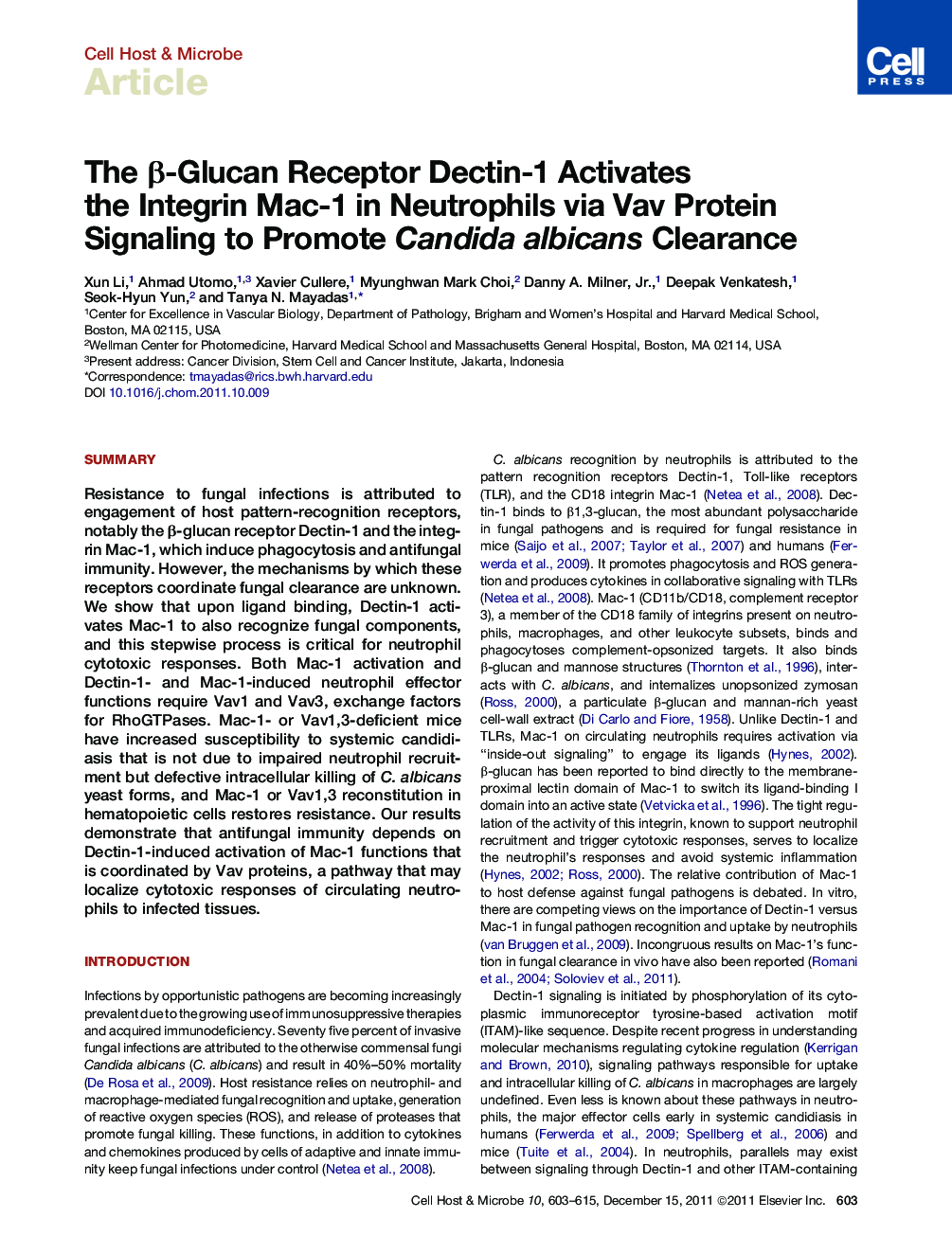| Article ID | Journal | Published Year | Pages | File Type |
|---|---|---|---|---|
| 4361311 | Cell Host & Microbe | 2011 | 13 Pages |
SummaryResistance to fungal infections is attributed to engagement of host pattern-recognition receptors, notably the β-glucan receptor Dectin-1 and the integrin Mac-1, which induce phagocytosis and antifungal immunity. However, the mechanisms by which these receptors coordinate fungal clearance are unknown. We show that upon ligand binding, Dectin-1 activates Mac-1 to also recognize fungal components, and this stepwise process is critical for neutrophil cytotoxic responses. Both Mac-1 activation and Dectin-1- and Mac-1-induced neutrophil effector functions require Vav1 and Vav3, exchange factors for RhoGTPases. Mac-1- or Vav1,3-deficient mice have increased susceptibility to systemic candidiasis that is not due to impaired neutrophil recruitment but defective intracellular killing of C. albicans yeast forms, and Mac-1 or Vav1,3 reconstitution in hematopoietic cells restores resistance. Our results demonstrate that antifungal immunity depends on Dectin-1-induced activation of Mac-1 functions that is coordinated by Vav proteins, a pathway that may localize cytotoxic responses of circulating neutrophils to infected tissues.
► The β-glucan receptor Dectin-1 activates the integrin Mac-1 on neutrophils via Vav1,3 ► Dectin-1 and Mac-1 antifungal responses depend on a Vav-dependent signaling pathway ► Mac-1 and Vav1,3 are essential for resistance to C. albicans blastoconidia infection ► Mac-1 and Vav are required for C. albicans clearance but not renal neutrophil influx
